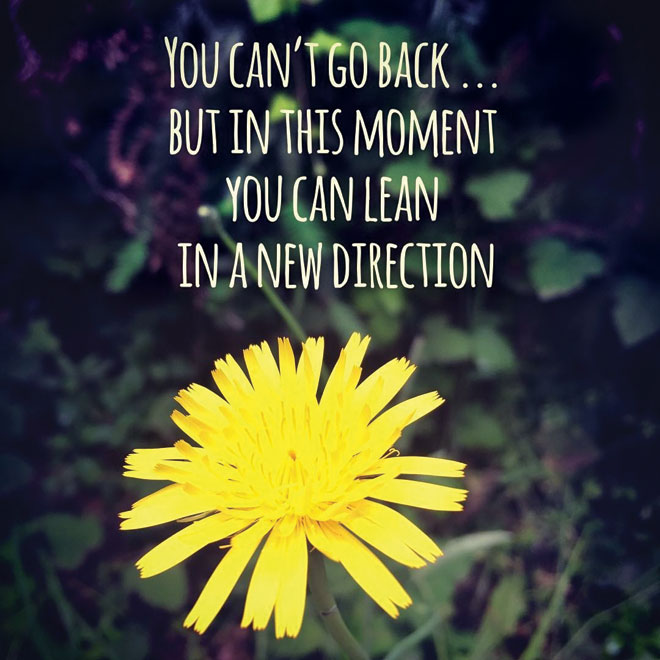
By Raquel Jex Forsgren, Yoga Therapist, C-IAYT –
Suffering is defined, in a broad sense, as an experience of unpleasantness and aversion associated with the perception of harm or threat of harm in an individual. The opposite of suffering is pleasure or happiness. Suffering can be mental, physical or emotional. It affects each of us uniquely. Simply put, it comes from what we
perceive, how we perceive it and our reaction to it with the “it” being a thought, a person or a circumstance. What is the catalyst to suffering? The mind.
At the root of suffering lies one word—control. I’ve been a “recovering control-freak” for the better part of my life. I grew up in a household where perfection was expected, coming and going was done with a thumb over my spirit, combined with a lot of loss and trauma. I learned at an early age that if I could control my grades, my achievements, my outside appearance, my tone of voice, my interactions, planning every detail over and over in my head and by playing out scenarios that I could essentially “control” all outcomes.
For the most part, I did control a lot of outcomes. Hard work paid off, I got the promotions, stayed in shape and much more. On the inside, my head felt like a dark, messy, spinning cycle of thoughts and my body was wracked with ulcers, anxiety, insomnia and low self-esteem. Over the past 10 years, with the help of two therapists, Lisa Herz and Melinda Yachnin, and a solid yoga practice, I’ve learned that we have to let go and get comfortable with being uncomfortable with how little we truly have control over.
HOW DOES YOGA HELP US HEAL?
Yoga is about living in the moment. Over time, a yoga practice will help you retrain yourself to focus on the present. During the physical practices, a teacher or yoga therapist will help you connect your breath to each movement, leaving little room to think about a failed relationship or what’s to come in the future. During these movements, emotions and thoughts do arise. It’s through being completely present in a pose that you can learn how to observe the emotion or thought without getting too involved.
Yoga changes your attitude. In every yoga therapy session, I ask the person something so simple, yet profound: “What are you grateful for?” Stop in this very moment while YOU are reading this, close your eyes, and answer that same question. It is physiologically impossible for the brain to have a negative thought while contemplating gratitude. Try it! Within this “attitude of gratitude”, your perceptions change and how you respond and react when circumstances change. Along with this attitude, the entire narrative we create in our minds subtly begins to shift with more yoga practice.
Try this simple ritual to see for yourself: keep a journal for the next 10 days, write just a few things at night that you are grateful for, noting your mood, and at the end, reread it and just notice if anything has shifted for you.
Yoga helps us to be comfortable being uncomfortable with change. Change is always happening. Our thoughts, the weather, our emotions, our bodies, friends, jobs and the list is endless. Most of the time the change is for the better and feels amazing. Sometimes, change just hurts. It becomes painful and we resist.
Most of the people I work with have described change fueling three emotions: anxiety, anger and sadness. Yoga teaches us to “lean in,” “embrace the emotion,” and “be curious” about it. I’ve learned how to do this from one of my teachers, Richard Miller, a psychotherapist and leader in the field of yoga therapy.
Guided meditation, with or without movement with yoga postures, is one of the best practices for doing this. I have a few on my website, and you can find others by searching for Richard Miller on the Insight Timer App, as well as www.iRest.us.
Close your eyes, notice HOW and WHERE you are breathing, notice WHERE you are feeling the strongest sensations in your body, take ten full rounds of breath, exhaling just a little longer than the inhale, and then notice the overarching emotion that you are feeling. Notice where you feel it in your body and say the words to yourself “I am leaning into this emotion.”
By simply being curious, you’ve allowed the emotion to be heard, witnessed and observed, thereby losing its power over you, leaving you with just a bit more insight on what is behind what you are feeling.
Remember, if we can control our mind and our breath, we can and will heal our own suffering.
Raquel Jex Forsgren is a Certified Yoga Therapist, C-IAYT, a graduate from Soul Institute and certified by the International Association of Yoga Therapists. Raquel has been living yoga for over a decade. She lives in Chicago. You can reach her at livingyogatherapy@gmail.com and visit her website at www.livingyoga-therapy.com.
 Conscious Community Magazine Dedicated to Elevating Consciousness
Conscious Community Magazine Dedicated to Elevating Consciousness




